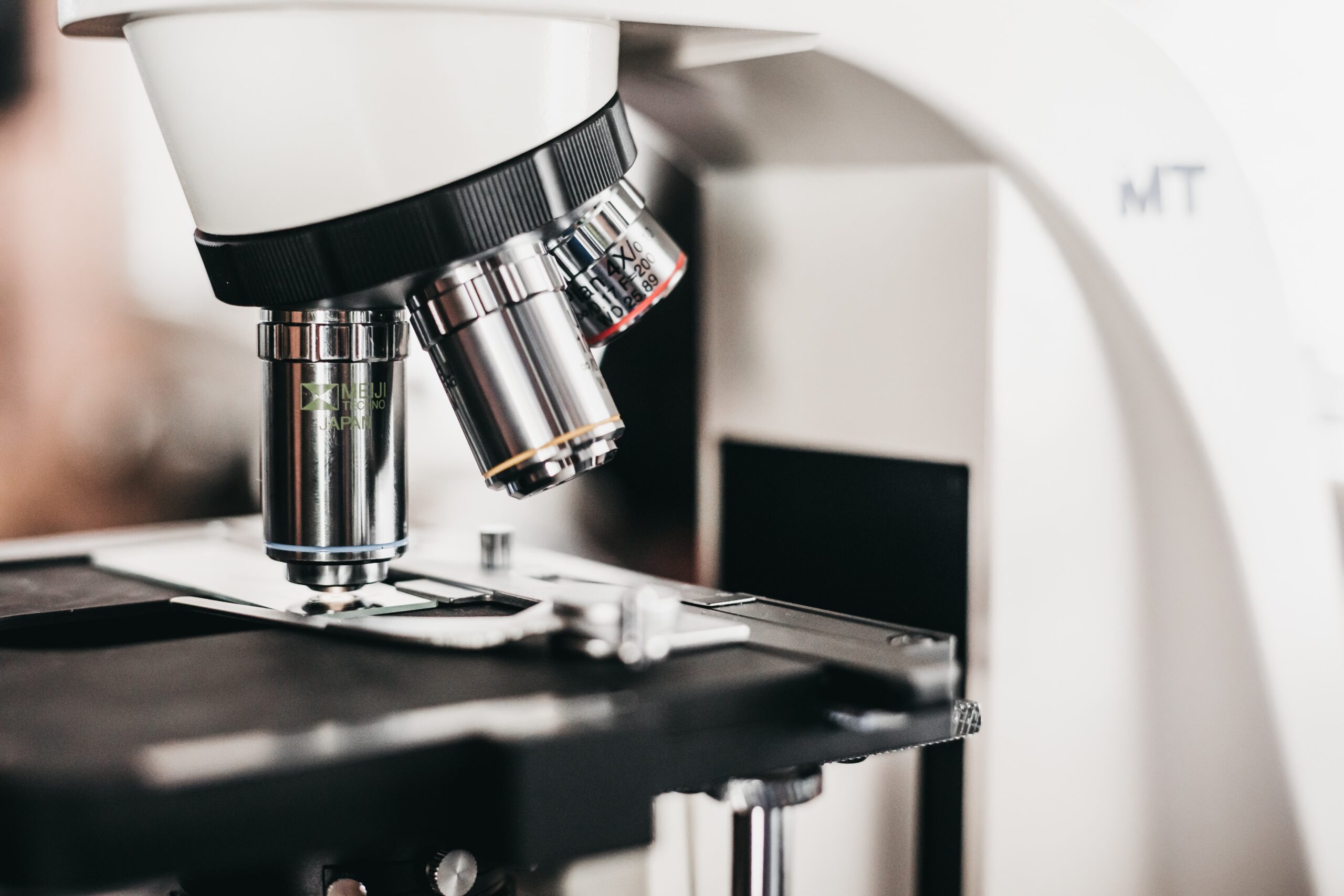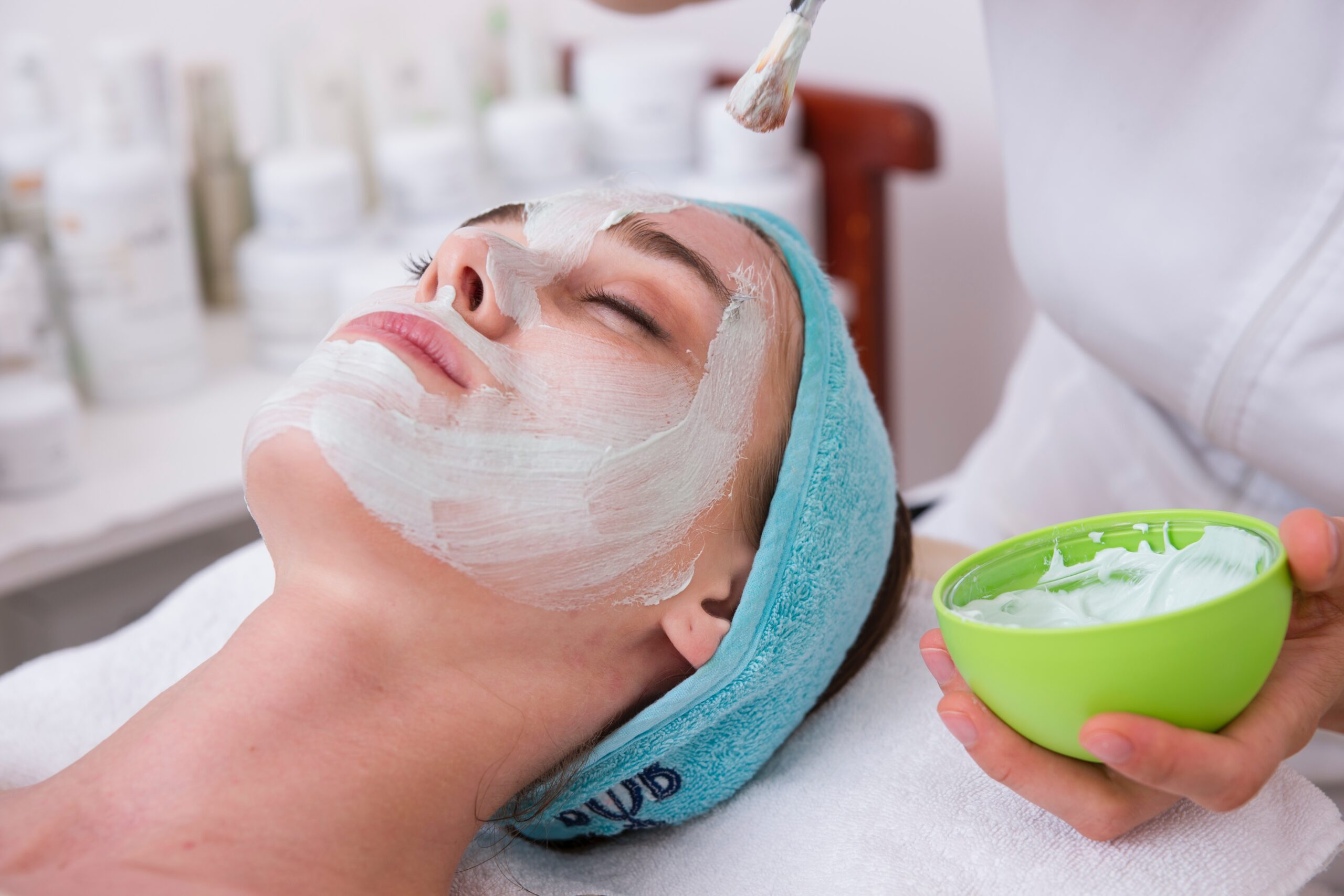Molluscum contagiosum is prevalent skin condition and causes distinctive skin abnormalities. The disease is characterized by high infectiousness and a mild course. Molluscum contagiosum tends to be chronic.
New cases are mainly seen in children, although adults can also become infected. It primarily develops in immunocompromised individuals.
Among children, the main route of spread of infection is through direct contact with the skin of an infected person. In the teenage and young adult population, molluscum contagiosum infection most often results from sexual contact with an infected person. The course of the disease and its symptoms are similar in children, adolescents, and adults.
The symptoms that a molluscum contagiosum infection can produce are fleshy or pearly bumps on the skin with a waxy surface. They most often develop around the skin folds of the thighs, buttocks, external genitals, and the sides of the trunk. The disease sometimes resolves spontaneously within a few months, while treatment is recommended due to the risk of infecting others. Treatment includes both pharmacological and surgical methods.

Viral diseases are a large group of conditions that can attack virtually all tissues in the body, including the skin's surface. One of the more common viral infections of the skin is molluscum contagiosum. It is a skin condition caused by the MC virus of the poxvirus family, which is in the same poxvirus family as the actual smallpox virus. MCV multiplies in the epidermal layer of the skin and rarely occupies mucous membranes.
Molluscum contagiosum can also be transmitted within the skin in the same person by touching skin lesions and transferring the virus on fingers to different places. This process is called autoinoculation. The disease is characterized by high infectivity. The main routes of transmission of the MC virus include:

Contact with an infected person – The transmission route is primarily contact with infected people. In this way, molluscum contagiosum is transmitted easily and quickly. Transmission of the MC virus occurs through direct contact with the skin and the cough-like secretions from skin lesions. It is the main route of spreading infection among children. In adults, molluscum contagiosum infection is most often the result of sexual contact. Therefore, lesions in the genital area are found more often in teenagers and young adults.
Contact with an infected object – Molluscum contagiosum can also be contracted indirectly. It can be brought about using an infected person's clothes, sponge, or towel. There are also known cases of infection in public places such as a gym, swimming pool. People infected with molluscum contagiosum should not use public places where they risk infection. Once molluscum contagiosum lesions are fully healed, there is no contraindication to going to the pool or getting a tattoo.
Molluscum contagiosum often targets specific populations. Mainly, individuals with weakened immunity and related conditions seem more prone. Quick diagnosis and effective knowledge about the disease's progression can accelerate the treatment process. This is paramount, primarily for those at higher risk for molluscum contagiosum. The groups more vulnerable to molluscum contagiosum include:

Children – Individuals who contract molluscum contagiosum are mainly children. The disease most often affects young children under five and young adults. Molluscum contagiosum in children is usually not dangerous. It can be more challenging when children have additional risks, such as reduced immunity or atopic dermatitis. In infants and younger preschoolers, infectious molluscum contagiosum can spread rapidly.
People with atopic dermatitis – Molluscum contagiosum can occur more frequently and with a more severe course in people with atopic dermatitis. Atopic dermatitis is a condition that can affect people of each age. In its course, chronic inflammation involving the outer layers of the skin develops. Symptoms of the disease include increased itching, swelling, redness, and skin dryness. Currently, no treatment is available to eliminate the causes of atopic dermatitis effectively. It is possible to reduce the severity of symptoms.
Immunocompromised people – People with immune disorders are particularly vulnerable to molluscum contagiosum. This group belongs to people undergoing immunosuppressive treatment, oncological treatment, or with AIDS, among others. It is worth remembering that for adults with severe molluscum contagiosum infection, testing for HIV infection![]() , which may have been the cause of the persistence of infectious molluscum, is recommended.
, which may have been the cause of the persistence of infectious molluscum, is recommended.
Sexually active people – Molluscum contagiosum often occurs in children but also in sexually active young adults. It is related to the fact that molluscum contagiosum can also occur as a sexually transmitted STD. An additional risk factor is regular shaving of the hair in the intimate area, which increases the possibility of spreading viral infections. The location of lesions on the lower abdomen and genital area may indicate a sexual route of molluscum contagiosum infection.
In infected cells, after embedding its DNA into the host genome, the virus multiplies in huge numbers, gradually replacing cytoplasmic elements. There is an enlargement of the occupied cells, and finally, their destruction and release of highly infectious contents. The cutaneous lesions caused by molluscum are usually characteristic, and the clinical picture is sufficient to make a diagnosis.
The first signs of infection are usually noticeable 2-3 months after infection. However, the disease incubation period can range from a week to 6 months. The period during which the sick person infects others can be long-term, even until the last lesions disappear.
Molluscum contagiosum is manifested by characteristic lesions on the skin. Usually, it is a benign disease entity complicated only by cosmetic consequences. When the lesions are numerous, their duration is prolonged, and they show resistance to the treatment, cellular immune deficiency should be suspected.

The lesions reach small, usually no larger than 5mm or 0.2 inches. However, in immunocompromised people, the lesions can be larger. Skin lesions can also gradually enlarge. It is small and hard lumps that are skin-colored or lighter in color.
Often, their color is described as pearly pink or white. In the central part of the skin lesion, there is often a navel-shaped depression caused by cell lysis. When the molluscum contagiosum is punctured, a granulomatous, highly infectious content composed of dead cells and virus particles exudes from the interior.
Sometimes, the observed lesions may be inflammatory. They are then reddened and lose their characteristic cavity. It makes proper diagnosis more difficult because the lesions become less expected of the typical picture of molluscum contagiosum. The location of the lesions on the lower abdomen and in the genital area may indicate a sexual route of infection of the molluscum.
Nodules can appear in each place on the body. Often, they occur singly, and then they sometimes go unnoticed or are downplayed, and it is both by the patient and the doctor. However, autoinoculation often happens, and molluscum occurs in clusters of several lesions.
The bumps can appear all over the body. They often develop around the skin folds, thighs, buttocks, external genitalia, and trunk sides. Sometimes, molluscum contagiosum virus infection results in skin lesions in the eyelid area. It is associated with the risk of keratoconjunctivitis.

Molluscum contagiosum bumps can sometimes be accompanied by minor soreness and pruritus. Remember that it is a viral skin disease that can quickly spread to a larger area when a child scratches the skin due to itching. For this reason, it is advisable to start treatment soon in the youngest. On the other hand, involvement of the eyelid area is associated with the risk of conjunctivitis and keratitis.
The clinical picture of molluscum contagiosum is relatively typical. Usually, no additional examinations are needed, as infectious molluscum can be easily diagnosed based on the skin lesions present. Helpfully, a specialist can use a magnifying glass, thus making the appearance of the bumps clear.
In people with normal immunity, the number of lesions ranges from a few to a few dozen, while in the AIDS stage, it can be several hundred. However, additional tests can be performed where skin lesions are unusual or difficult to diagnose.
Histopathological examination – When in doubt, a histopathological examination is done, which evaluates the appearance of the bumps under a microscope. For this goal, the contents of the lump are taken, or a piece of skin within the lesion is cut out. In doubtful cases, histopathological examination is of very high diagnostic value, as it confirms the diagnosis unequivocally.
Immunofluorescence method – The test is a basic immunopathological technique involving the detection of human immunoglobulins in sections taken from the patient using fluorochrome-labeled animal immunosera. The immunofluorescence method detects antigens or antibodies to the virus. Immunofluorescence technique![]() is the most widely used screening method in diagnosing autoimmune diseases. The technique has excellent sensitivity and is, therefore, very often the method of first choice.
is the most widely used screening method in diagnosing autoimmune diseases. The technique has excellent sensitivity and is, therefore, very often the method of first choice.

The disease sometimes resolves on its own within a few months, while treatment is recommended due to the risk of infecting others. A single molluscum lesion heals in a few to several weeks, but usually, new lesions develop, and the healing period can stretch into months and years.
Untreated molluscum contagiosum lesions can leave scars. Management depends on the age, location, and extent of the lesions. Treatment is implemented, especially in those with a severe course. There are several methods of topical therapy. None of them is 100% effective and free of complications. Treatments for molluscum contagiosum include:
Removal of skin lesions – The most common and effective option is physically removing lesions by cryotherapy. However, these methods are painful, and even the use of local anesthesia does not reduce discomfort during the procedure, which makes them much more challenging to use in children. A chemical ablation method![]() is also possible. However, this treatment method can also cause pain or irritation during application. It also carries the danger of more extensive skin damage. Scarring after such treatment is expected, which makes it reluctant to use it in treating facial lesions.
is also possible. However, this treatment method can also cause pain or irritation during application. It also carries the danger of more extensive skin damage. Scarring after such treatment is expected, which makes it reluctant to use it in treating facial lesions.
Ointments and creams – A new drug is a cream that modifies the body's immune response. By increasing the secretion of cytokines, it indirectly has an antiviral effect, thereby preventing the spread of lesions. In studies, it has shown relatively high efficacy, including in HIV-infected patients. It is an organic chemical compound, an immune response modulator, used to treat certain skin diseases.
Pharmacotherapy – Drug treatment is also possible but is not always practical. In addition, oral antiviral drugs are sometimes used in immunocompromised patients. Antiviral drugs are used in people with severe immunodeficiency, especially those with HIV.

When molluscum contagiosum has unusual skin lesions, diagnosis can be difficult. Sometimes, during the observed lesions, they may be inflammationally altered. They are then reddened and lose their characteristic depression, and the process of decay may be marked centrally. Then, differentiation is more complex, as they may resemble different skin diseases. These include:
Epidermal nevi – Nevi are various abnormalities in the structure and function of skin cells. Within it, several subgroups are distinguished. One is epidermal nevi, which can be congenital or acquired in childhood or later in life. Epidermal nevi take various forms. They can be visible in the type of erythema, a dark growth, or scaly patches of skin color. They are sometimes mistaken for skin diseases. Each skin lesion should be consulted with a dermatologist to rule out the presence of a cancerous lesion, especially melanoma.
Milk spots – The skin lesions are tiny, convex, pearly white, or yellowish nodules on the skin. They are often found on the skin around the cheeks, nose, eyes and eyelids, forehead and chest. However, they can appear anywhere on the body. Milk spots are prevalent in newborns but can affect people of each age. They form when keratin becomes trapped under the outer layer of skin, creating a tiny cyst. Usually, millet cysts are not painful or itchy. The lesions are harmless, non-infectious, and resolve spontaneously after some time, especially in children.
HPV infection – HPV is the cause of benign lesions such as warts and genital warts. Infection with the human papillomavirus most often occurs during sexual intercourse and through contact with the epidermis of an infected person. Common warts can develop as a result of HPV infection. The lesions usually form on the fingers of the hands; they are in the type of papular lesions with an uneven surface and up to a few millimeters in diameter; their spread is facilitated by scratching.
Glandular cysts – Bartholin's gland belongs to this group. It is a small lump easily felt on the labia majora. It is responsible for producing a secretion that appears during sexual excitement, which moistens the vestibule of the vagina and facilitates intercourse. A cyst of this gland is formed due to blockage of the ducts draining mucus. Bartholin's gland can resemble molluscum contagiosum lesions in the intimate area.
Meibom's gland cyst – Meibom's glands are sebaceous glands in the eyelid discs. These glands synthesize and secrete lipids and proteins to prevent evaporation of tears, which are delivered to the rim of the upper and lower eyelids of the eye. Meibom's gland dysfunction is one of the most common ophthalmic entities, causing a range of symptoms that, if left untreated, lead to visual impairment. Meibom's glands can resemble molluscum contagiosum lesions in the eyelids.
Perifollicular keratosis – Perifollicular keratosis of the skin is a benign disease entity, a cosmetic defect, at the genesis of which lies an abnormal keratinization of the epidermis. The condition can progress to a mild level and resolve spontaneously or give more troublesome symptoms. The most important symptoms of perfollicular keratosis include small bumps at the hair follicles' mouths. Redness situated at the site of papular lesions may also be present, indicating the presence of inflammation.
Molluscum contagiosum is a disease of the skin and mucous membranes. A virus of the MCV pox group causes it. Molluscum contagiosum is a disease that is most prevalent among children. MCV also occurs in adults, usually as a sexually transmitted venereal disease. It mainly develops in immunocompromised people. The infection spreads primarily through direct contact with the skin or secretions from viral skin lesions or indirectly through infected objects.
Molluscum is characterized by high infectivity. A sick person can spread the lesion to further locations by touching a lesion with the hand and then a different spot on the skin. The symptoms that an infectious molluscum contagiosum infection can give are flesh-colored or pearly lumps on the skin with a waxy surface. The nodules are hard, smooth, and filled with a pudgy discharge. They have a characteristic depression in the central part.
In the course of molluscum contagiosum, the clinical picture is quite typical. In case of doubt, a histopathological examination can be performed. Treatment includes both pharmacological and surgical methods. When molluscum contagiosum has an atypical course, it may resemble other skin diseases, which should be considered in the diagnosis.